Discovering Double Stars And Debunking The Planet 'Vulcan'
Its gaze stretches far beyond Earth's confines, and it's taken part in astronomy research around the planet, but when the sun sets, the Burnham telescope calls Wisconsin home.
July 11, 2019
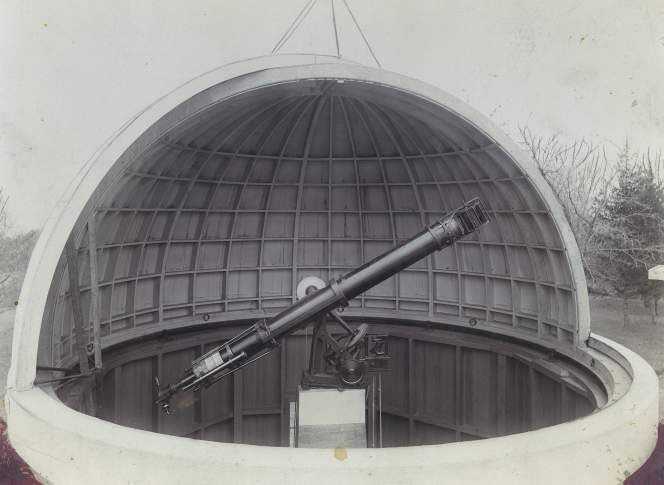
Burnham Telescope in student observatory at Washburn Observatory at UW-Madison

Its gaze stretches far beyond Earth’s confines, and it’s taken part in astronomy research around the planet, but when the sun sets, the Burnham telescope calls Wisconsin home.
This historic refracting telescope is recognized as a small but mighty scientific instrument that was nearly revolutionary for its era. University of Wisconsin Space Place director Jim Lattis recounted its legacy in a Jan. 9, 2018 talk recorded for Wisconsin Public Television’s University Place.
The telescope was constructed by optics-makers Alvan Clark & Sons and was named for the man who purchased it, Sherburne W. Burnham, who was a stenographer by trade but practiced astronomy as a hobby. Burnham first met with Clark while the telescope maker was passing through Chicago to observe a solar eclipse in Iowa.
Research telescopes like the Burnham have been used for centuries but saw some of the biggest improvements in the 1800s, the start of which are usually associated with Joseph von Fraunhofer, a German optics maker. Fraunhofer’s work set the stage for generations of telescopes to come, including the Burnham, which was constructed in 1870.
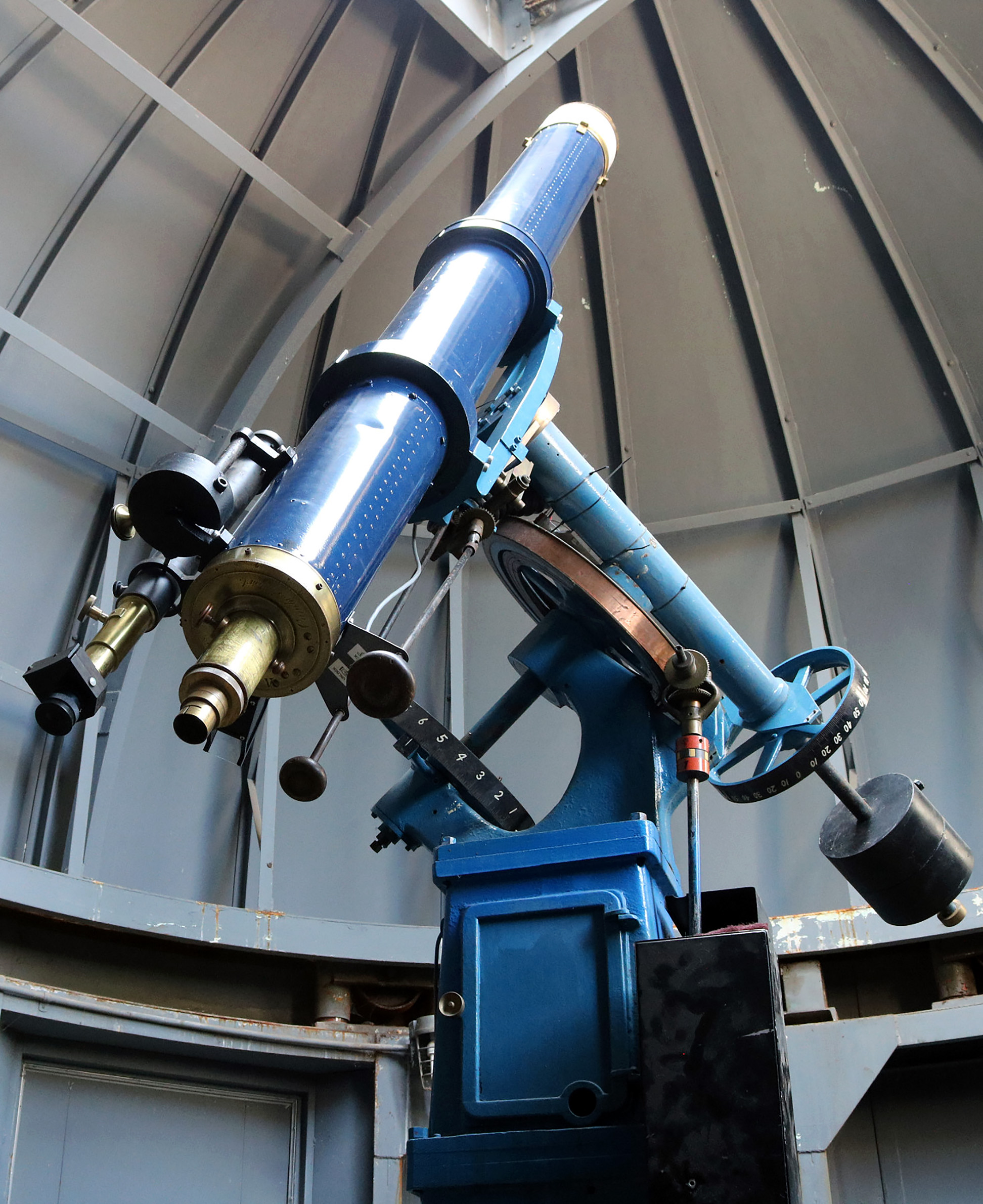
The telescope’s original purpose when Burnham commissioned it was to find and document “double stars,” which are stars that appear as singular to the human eye but, with enough magnification, can be seen to actually be two stars. It is credited with discovering hundreds of double stars and even disproving the existence of the hypothesized planet dubbed “Vulcan.”
The Burnham telescope has passed through many hands over the years. It was brought by Burhnam to Washburn Observatory on the UW-Madison campus, was sent on an expedition to the South Pacific, was reconstructed with a new tube, kept in storage for decades, was briefly brought to Appleton and has since resided in Sterling Hall on campus for nearly 60 years.
Key facts
- Sherburne W. Burnham discovered his first double star in April 1870 shortly after purchasing the telescope. He would go on to discover more than 400 double stars with his six-inch telescope, vastly outperforming telescopes of larger sizes. Burnham went on to publish two stellar catalogs, one in 1900 and another 1906, which detailed thousands of double stars he discovered.
- The first director of the Washburn Observatory at UW-Madison was James Craig Watson. An acclaimed astronomer, Watson came into the position with a bit of controversy. At the time, some astronomers believed there was another planet in the solar system somewhere near Mercury’s orbit. This hypothesized planet was (prematurely) named “Vulcan” (more than a century before Star Trek first aired) when it was claimed to have been discovered by a French astronomer. Fascinated by the potential planet, Watson set out to confirm its existence. He first claimed to have spotted it during a total solar eclipse in 1879 and upon starting his new position with UW-Madison, he built a smaller, second solar observatory at Washburn from which he formulated his plans to vindicate his purported Vulcan sighing. Watson, however, died before putting this plan into action.
- Edward Holden was an astronomer at the U.S. Naval Observatory in Washington, D.C. when he first met Burnham in the 1870s. Shortly after, Holden was named the director of the Washburn Observatory and he invited Burnham to collaborate on a project to take double star measurements. Burnham brought his namesake telescope to Madison and set it up in the second building at Washburn, which had since become a student observatory. Though Burnham himself didn’t stay in Madison for longer than six months, his telescope remained in the student observatory after he returned to Chicago. UW-Madison eventually purchased the telescope from Burnham for $1,200.
- In June 1883, Edward Holden took the Burnham telescope with him on a scientific journey to the Caroline Islands in the South Pacific Ocean, once again to be used in a search for Vulcan during a total solar eclipse. During the eclipse, Holden charted the sky looking for potential anomalies, but found none. Holden’s findings — or lack thereof — were confirmed by fellow astronomer on the trip, Johann Palisa from the Vienna Observatory. Holden went on to publish a paper stating definitively that Vulcan did not exist and searches for the mystery planet lacked merit.
- In 1886, George Comstock took over as director of the Washburn Observatory. A student of James Craig Watson’s, Comstock is credited with establishing important astronomy research programs at UW-Madison. During his tenure, he used the Burnham telescope to track measurements of refraction and aberration, which could be used to create an equation for calculating more accurate star positioning.
- The Burnham telescope traveled far and wide with many astronomers throughout and following its research career. In 1908, its wooden tube was replaced with steel and it continued to be used by students at UW-Madison. Later in the 20th century, parts of the telescope were put on display at both the Rosenwald and Adler museums in Chicago. The telescope stayed in storage at Washburn until 1956 when an Appleton astronomer asked to use it. The Burnham telescope resided in Appleton for three years before returning home to Madison, where it is used for training students at Sterling Hall on campus.
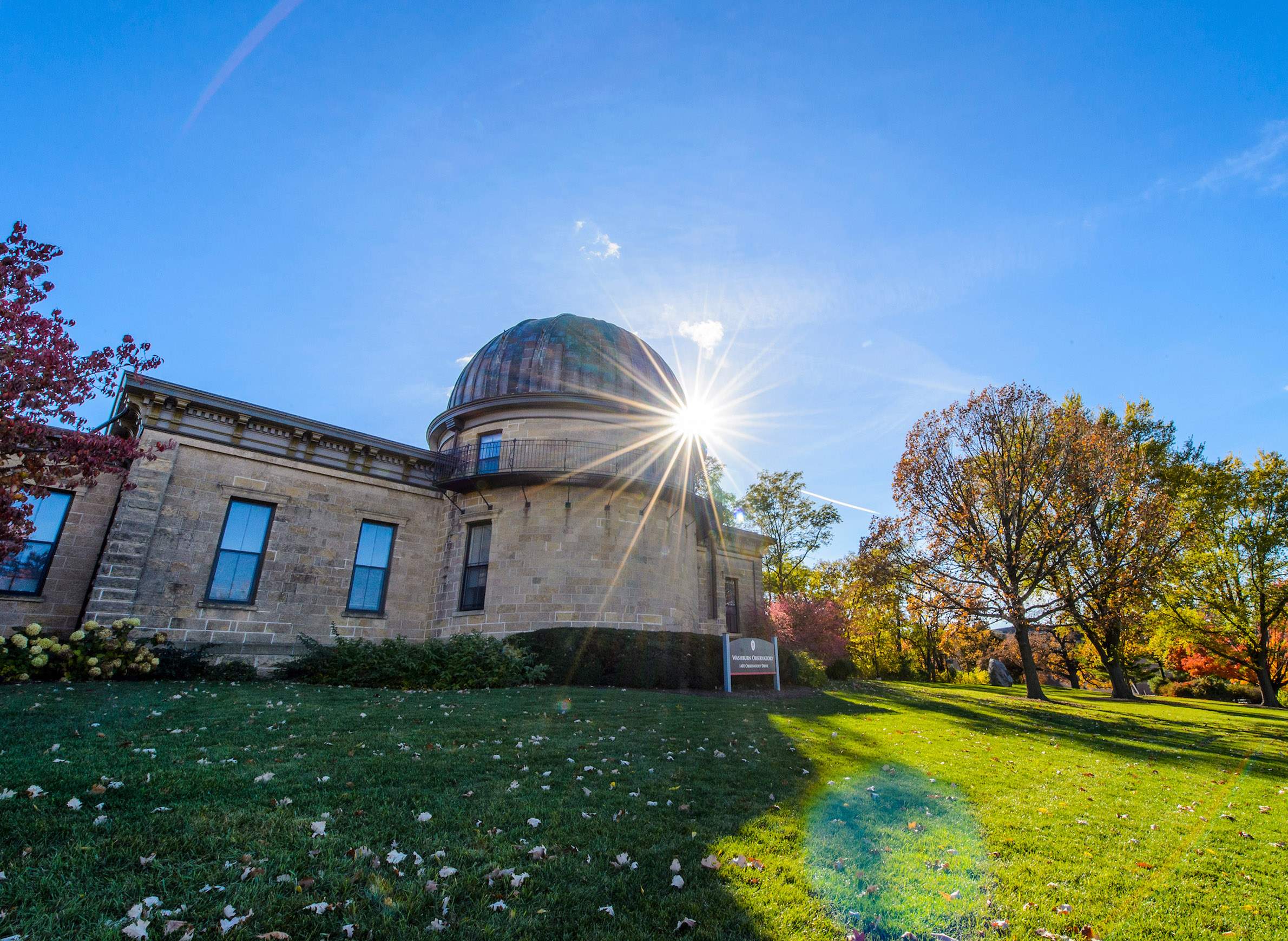
Key quotes
- On Sherburne W. Burnham’s propensity for tinkering: “Burnham became a little bit of a legend in the field for managing to improvise devices. He improvised a clock drive, which is the device that keeps the telescope axis turning so that it will follow an object in the sky. … Burnham wrapped a rope around the polar axle and connected it to a weight, and the weight sat on a bucket of sand with a hole in it. … So he built a clock drive for almost nothing.”
- On getting the telescope to Madison: “Edward Holden came here in 1881 to become director of the Washburn Observatory. Holden knew Burnham from the Naval Observatory and needed to build a staff of astronomers. Burnham was right there in Chicago and so Holden convinced Burnham to come join the staff at Washburn Observatory on a temporary basis that would hopefully become permanent. And he said, by the way, bring along that six-inch telescope that you’ve got down there.”
- On Burnham’s work documenting double stars: “It takes a good quality telescope to separate those closer pairs there. It requires a sharp eye from the observer and it requires a telescope of good optical quality, and it requires a good atmosphere, what astronomers call seeing. The air should be stable and not blurring the images. If you get all three of those things then you can separate close double stars.”
- On controversy over the planet “Vulcan” and James Craig Watson: “So now there’s a little bit of controversy. Watson says he saw it, nobody else can confirm that, and frankly people were pretty skeptical of Watson. Although Watson had a fantastic reputation. He held the world’s record for discovering asteroids. He was a very, very skilled observer, and very well regarded overall as a scientist. Watson’s reputation is at stake here, so he needs to confirm that his observation was not in error and that he actually had seen this planet. Well how to do that? Watson came to Washburn Observatory in [late] 1879 as the new director here amid all this controversy.”
- On Burnham’s admiration for his telescopes: “In [Burnham’s] 1900 star catalog, the preface to the catalog has a very interesting introduction in which he describes each of the telescopes that he’s used for his double star work. And when he gets to the six-inch, he says this: ‘It is hardly necessary to say, in view of the discoveries made with it and given in this catalog, that its performance on the most difficult objects was simply perfect. Many of the stars discovered with it are by no means easy to measure with the largest telescopes now in use. Some of the most rapid and interesting binaries in this catalog were discovered with this instrument. It now belongs to the Washburn Observatory of the University of Wisconsin.'”
 Passport
Passport




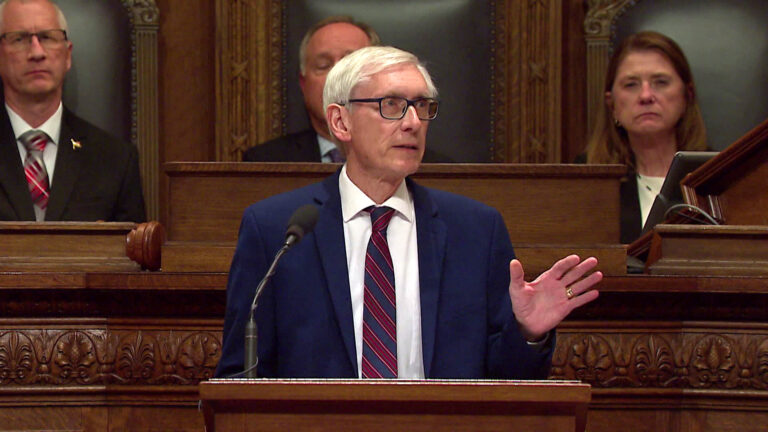




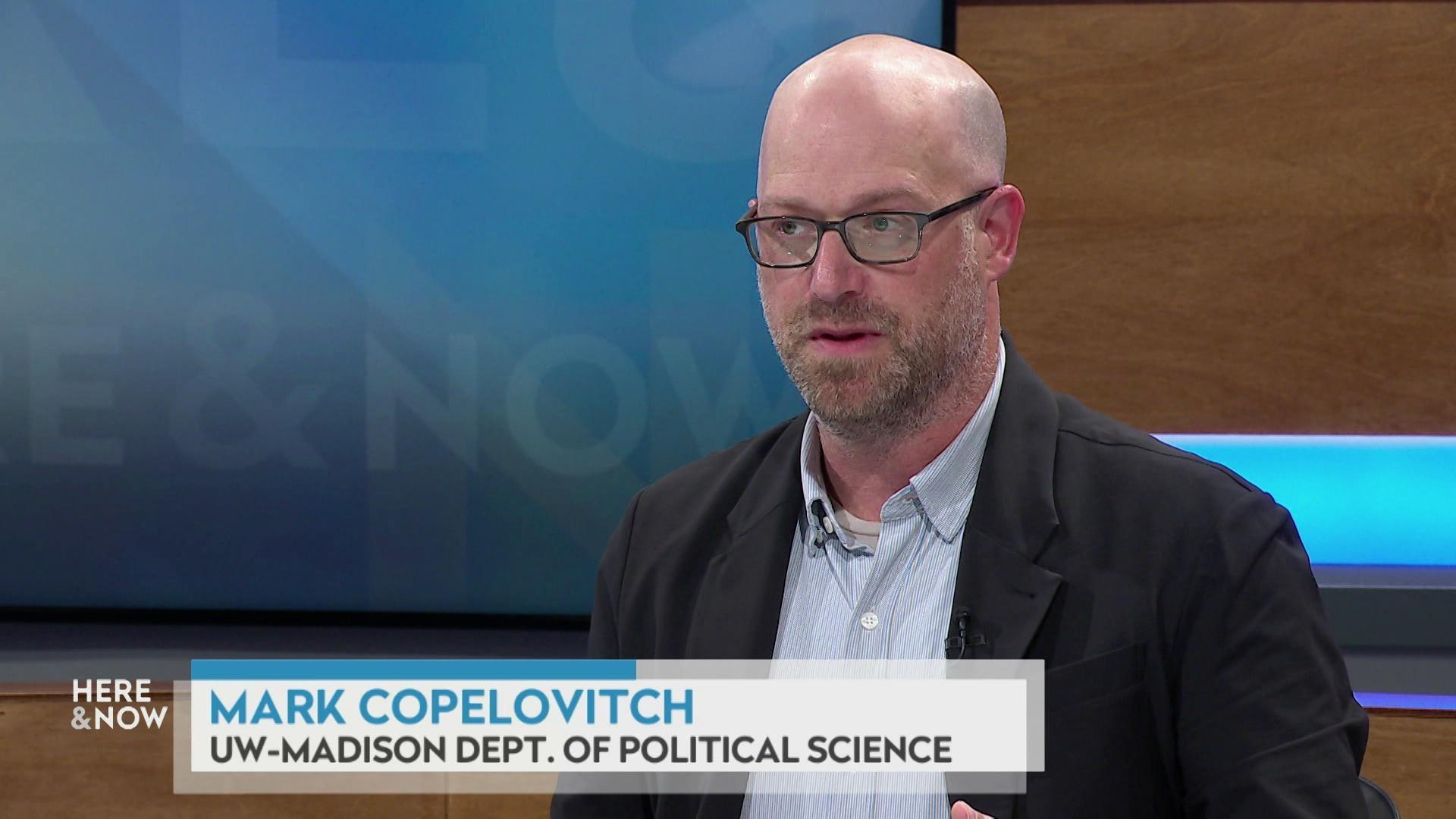


Follow Us